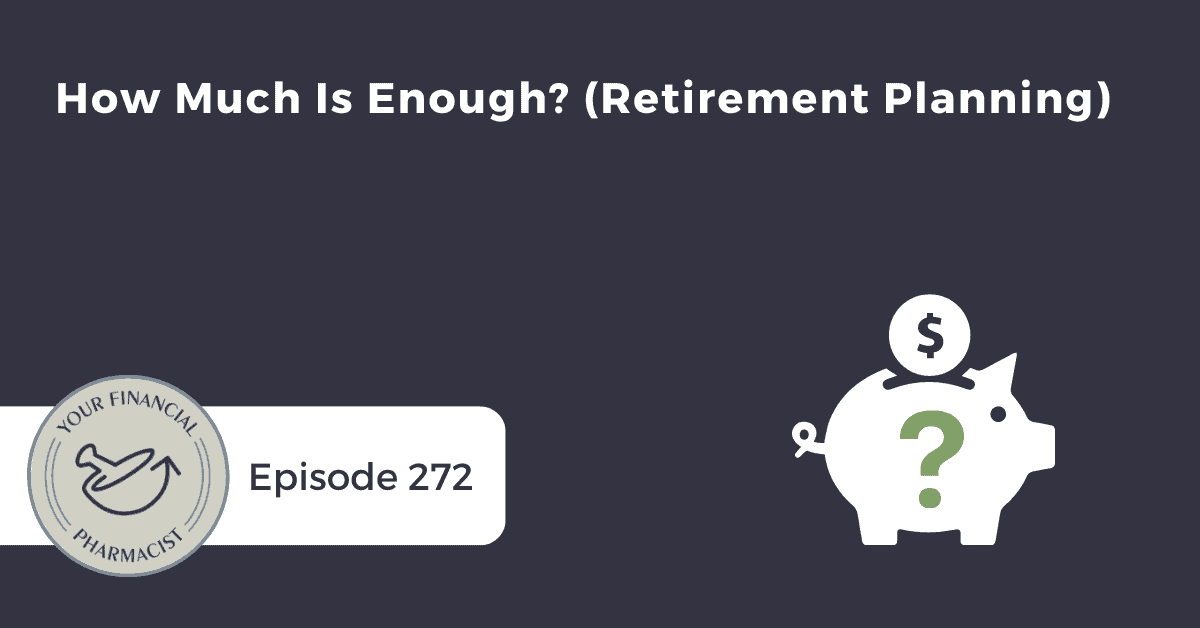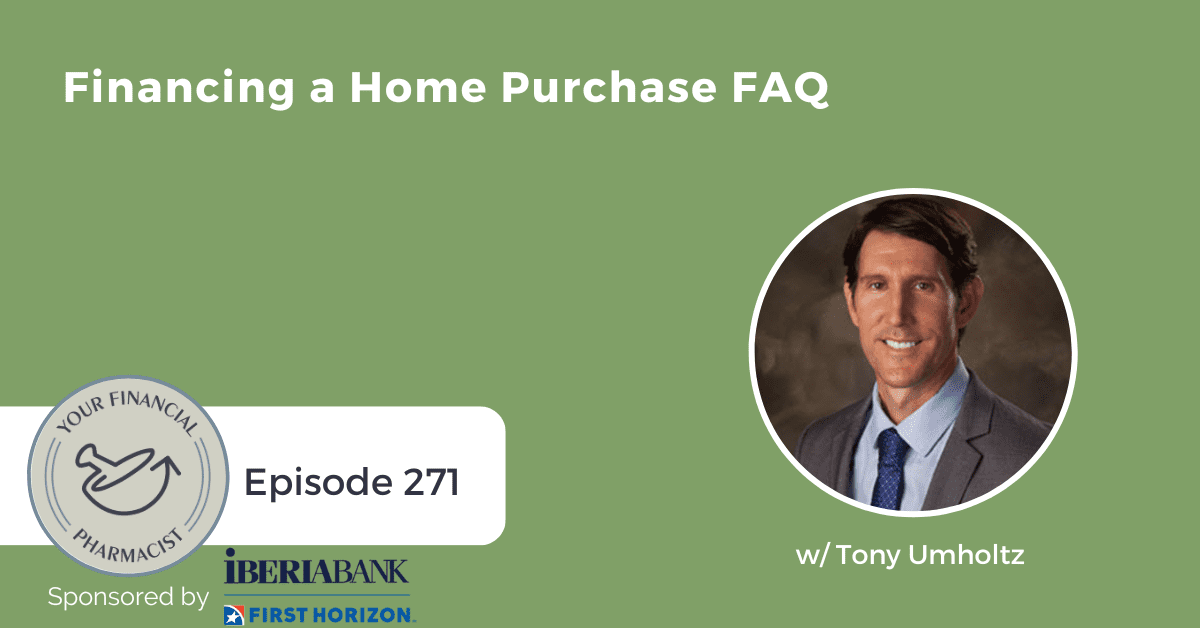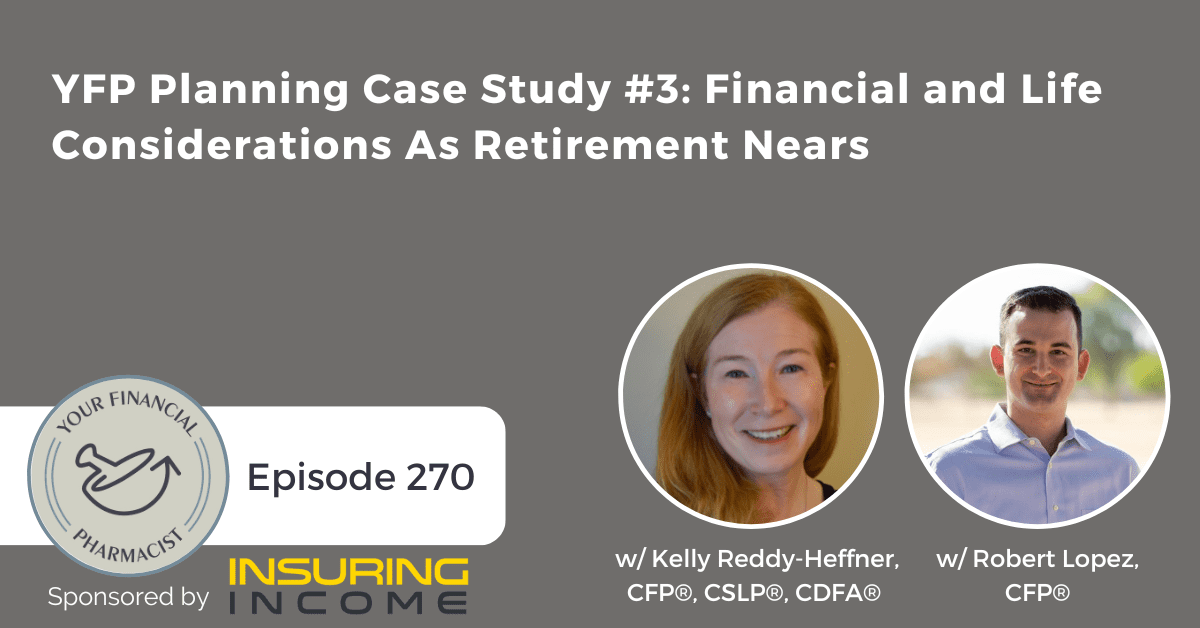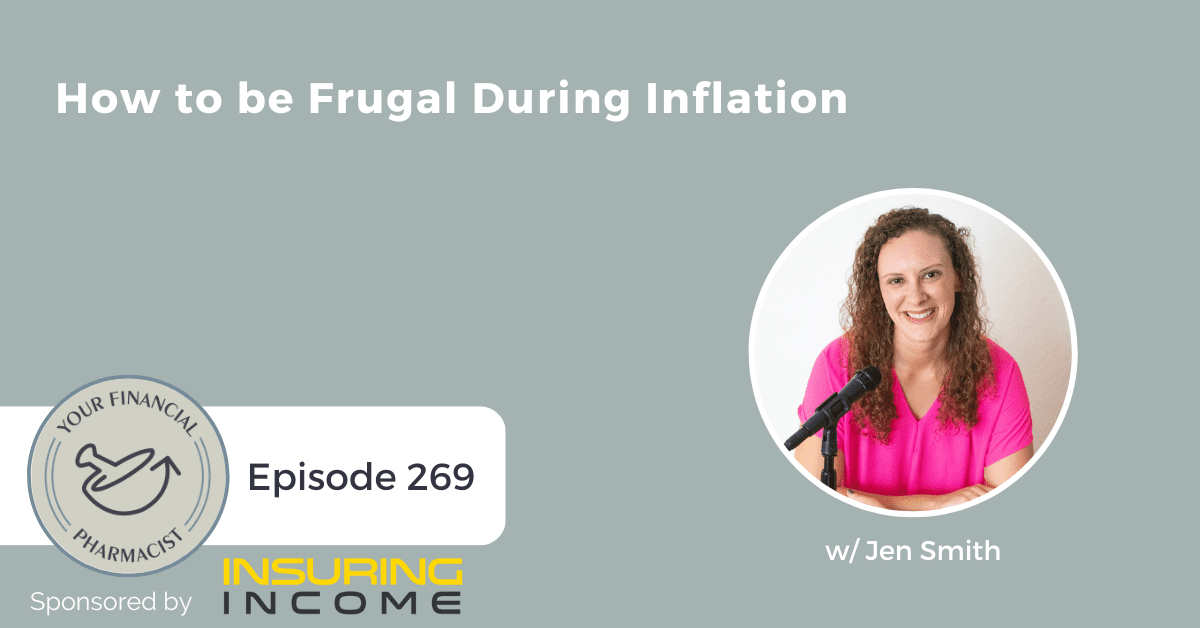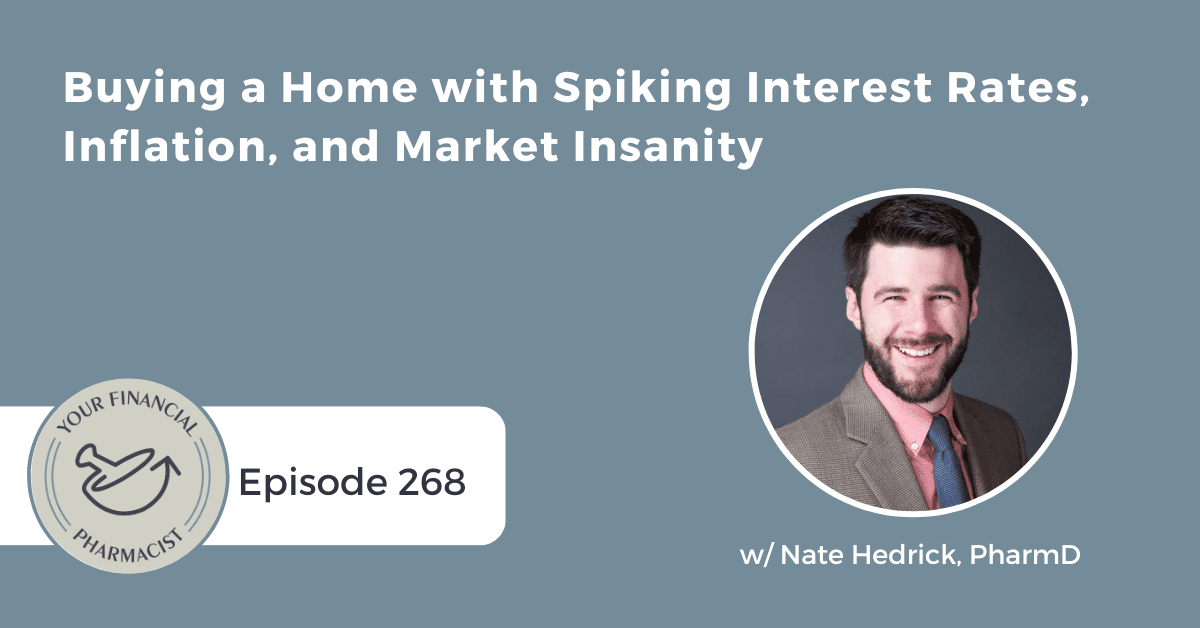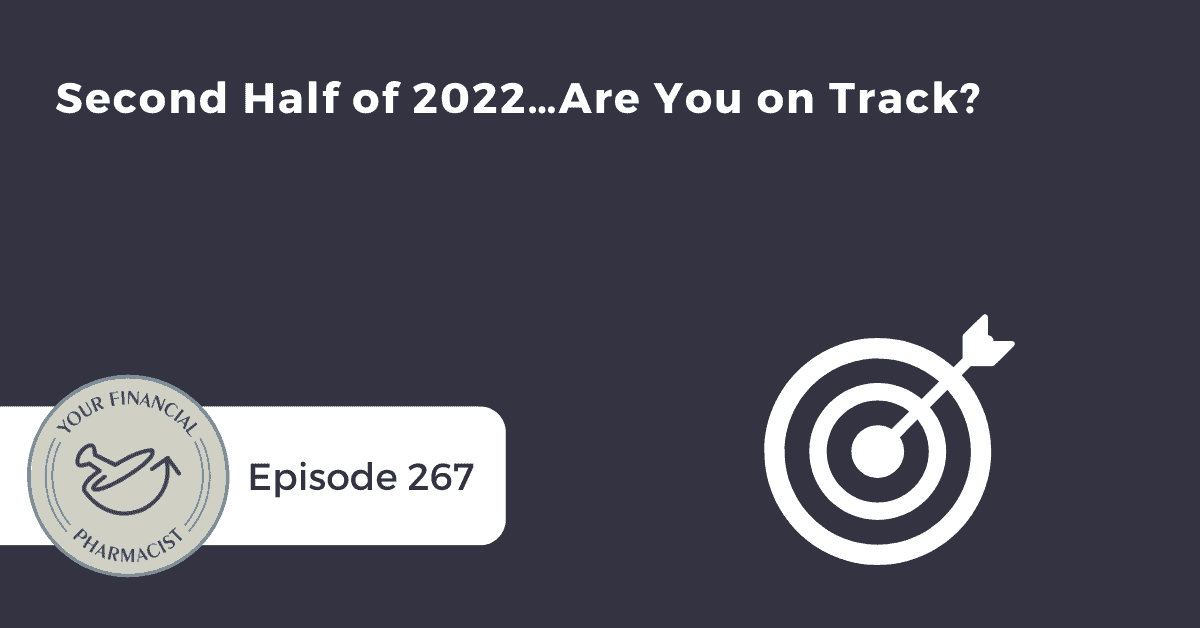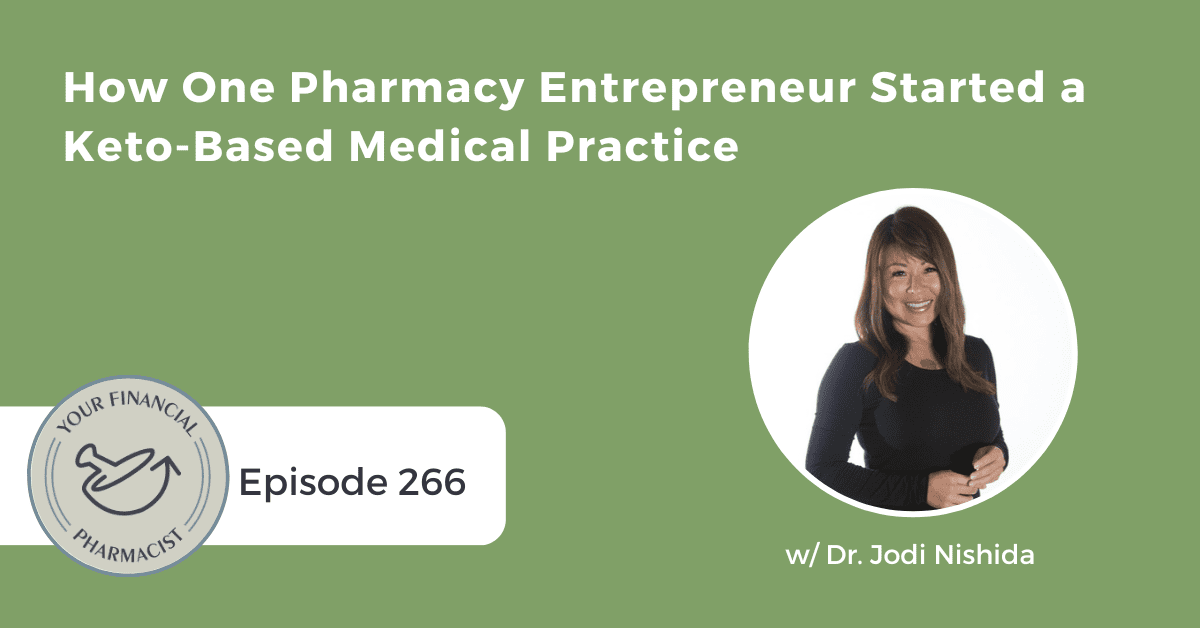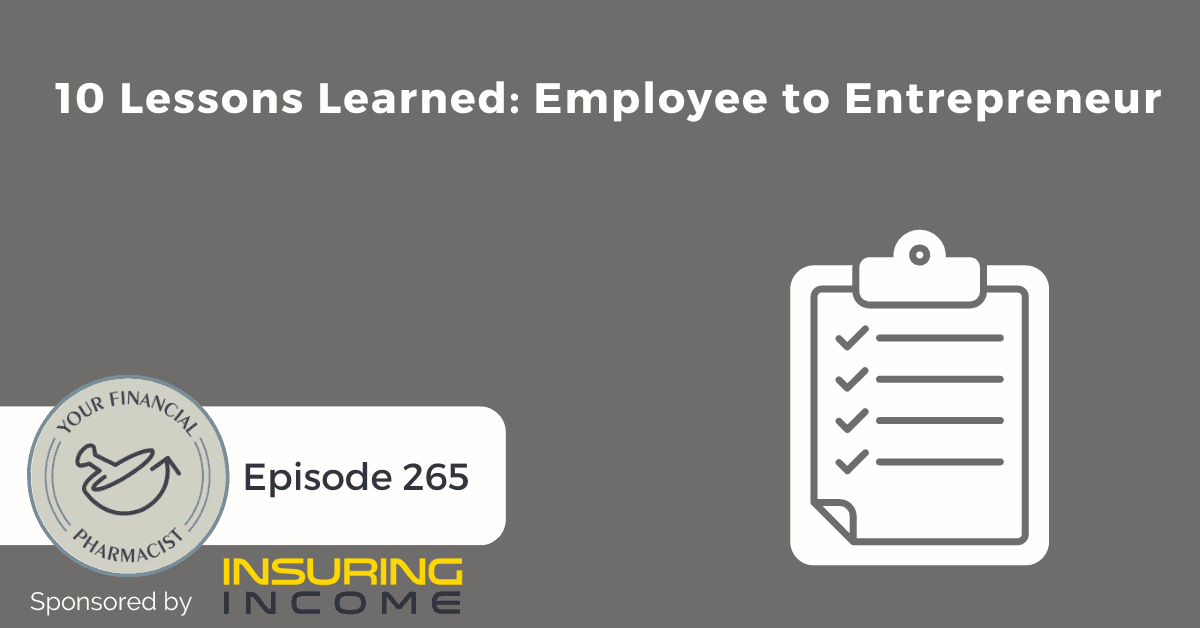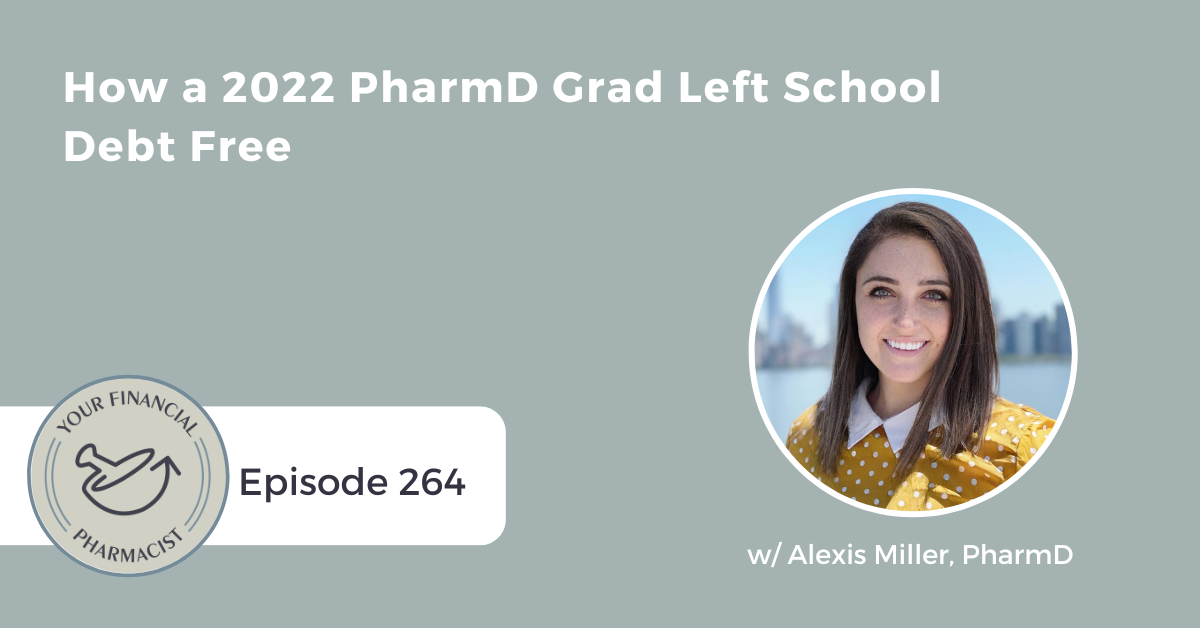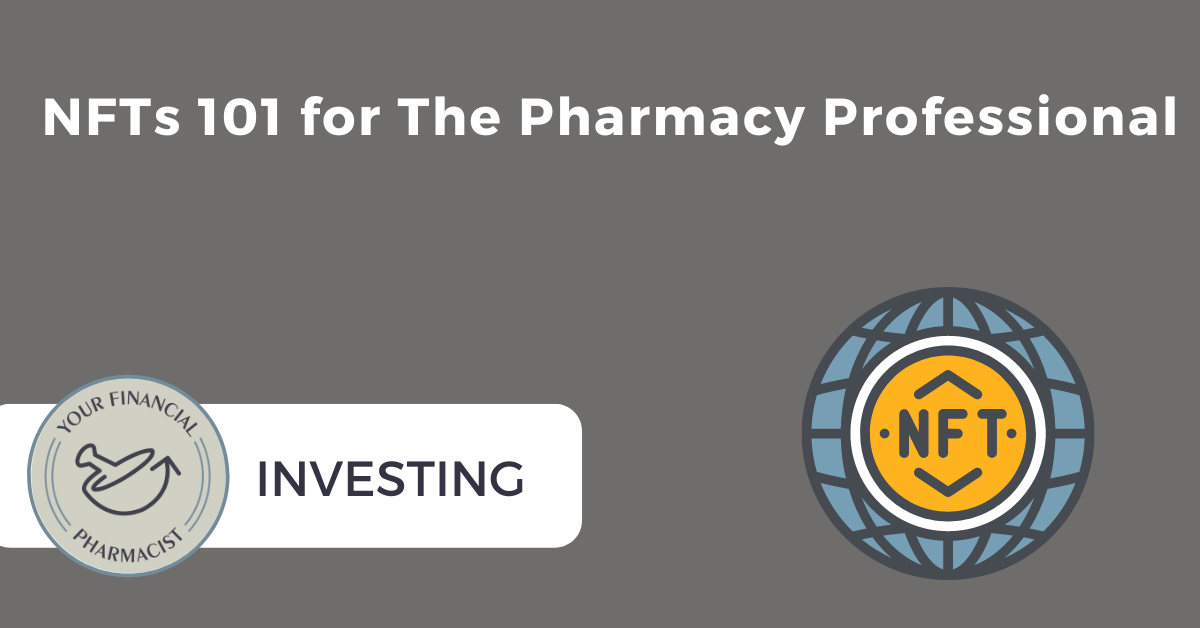How Much Is Enough? (Retirement Planning)
On today’s episode, sponsored by APhA, Tim Ulbrich, PharmD, sits down with Tim Baker, CFP®, RLP®, to discuss how much you need for retirement in part one of the four-part series focused on retirement planning.
Episode Summary
Tim Ulbrich, PharmD, sits down with Tim Baker, CFP®, RLP®, to discuss how much is enough when it comes to retirement planning in part one of the four-part series focused on retirement planning. In this discussion, Tim and Tim cover finding a balance between saving for the future and living a rich life along the way, factors to consider including determining how much is needed when building a nest egg, what the 4% rule is and why it is commonly used as a safe withdrawal rate during retirement, and why time in the market and savings rate matter more than the rate of return on investments. Tim Baker shares his opinion on financial planning as an exercise in goal setting for the long term while balancing experiencing life in the present and how financial planning and even minor changes in your investment portfolio can have a significant impact on your total retirement amount. They dive into what many folks consider a safe savings rate and considerations for increasing that savings rate dependent on numerous factors in the financial plan. Tim and Tim explain the rule of 25, which is popularly used in the FIRE (Financial Independence Retire Early) community as a guideline for retirement savings, how it works, and how it compares to the 4% rule. They close with general calculations and formulas for determining the nest egg for retirement and tease next week’s episode on the “alphabet soup” of retirement accounts.
Links Mentioned in Today’s Episode
- YFP Planning: Financial Planning for Pharmacists
- Schedule a free Discovery Call with YFP Planning
- Join APhA – Get 25% Off Your Membership with Code: YFP
- YFP 253: YFP Planning Case Study #1: Growing a Family, Paying Off Student Loans, and Buying a House
- YFP 261: YFP Planning Case Study #2: Planning for Retirement, Saving for Kids’ College, and Paying Off Debt
- YFP 270: YFP Planning Case Study #3: Financial and Life Considerations As Retirement Nears
- YFP Tax
- Your Financial Pharmacist Disclaimer and Disclosures
Episode Transcript
[INTRODUCTION]
[00:00:00] TU: Hey everybody, Tim Ulbrich here and thank you for listening to The YFP Podcast, where each week, we strive to inspire and encourage you on your path towards achieving financial freedom.
On this week’s episode, Tim Baker and I kick off a four-part retirement planning series by discussing how to determine how much is enough when it comes to saving for retirement. Highlights from the show include finding a balance of saving for the future, while also living a rich life along the way, as Tim Baker says, “It can’t be just about the ones and zeros in the bank account.” Factors to consider when building a nest egg and determining how much is needed. What the 4% rule is and why it is commonly used as a safe withdrawal rate during retirement. And why time in the market and savings rate matters more than rate of return. Before we jump into the show, I recognize that many listeners may not be aware of what the team at YFP Planning does, and working one on one with more than 270 households in 40 Plus states.
YFP Planning offers fee only, high-touch financial planning that is customized to the pharmacy professional. If you’re interested in learning more about how working one on one with a certified financial planner, who may help you achieve your financial goals, you can book a free discovery call at yfpplanning.com. Whether or not YFP Planning financial planning services are a good fit for, know that we appreciate your support of this podcast and our mission pharmacists achieve financial freedom.
Okay, let’s hear from today’s sponsor, and then jump into my conversation with certified financial planner, Tim Baker.
[SPONSOR MESSAGE]
[00:01:33] TU: Today’s episode Your Financial Pharmacist Podcast is brought to you by The American Pharmacists Association. APhA has partnered with Your Financial Pharmacist to deliver personalized financial education benefits for APHA members. Throughout the year, APhA will be hosting a number of exclusive webinars covering topics like student loan debt, payoff strategies, home buying, investing, insurance needs, and much more. Join APhA now to gain premier access to these educational resources and to receive discounts on YFP products and services. You can join APhA at a 25% discount by visiting pharmacist.com/join, and using the coupon code YFP. Again, that’s pharmacist.com/join, and using the coupon code, YFP.
[INTERVIEW]
[00:02:19] TU: Tim Baker, welcome back on the show.
[00:02:21] TB: Thanks, Tim. Yeah, good to be back.
[00:02:23] TU: It’s been a while. I mean, you’ve done some case studies with the planning team, which have been awesome. But we haven’t been back on the show together in some time, so I’m looking forward to this series that we’re going to be doing on retirement planning. We’ve got a four-part series plan, all about retirement planning, starting with determining how much is enough, what do we need as we look at preparing towards retirement, and ending with strategies and considerations for actually building that retirement paycheck. And a topic that’s often overlooked, we’ll talk about that in detail when we get to that fourth and final part.
I believe we’ve constructed this, Tim, in a way that whether it’s a new practitioner who’s just getting started wondering what’s this big scary number for off in the future, or someone who’s mid-career checking in to see if they’re on track, or pre-retiree thinking about, “Hey, this is coming up, and are there some tweaks that I need to make, or adjustments or perhaps confirmation that I’m on track.” I think this topic is relevant, regardless of where someone is at, at their career.
So, we’re going to get into the dollars and cents. We’re going to nerd out on the nest egg and some of the X’s and O’s. But first, I think it’s valuable that we consider what is the purpose, what’s the vision for what we’re trying to do before we start thinking about, is it 3 million? Is it 4 million? Is it 5 million? So, Tim, talk to us about number one, why is this so important before we actually determine how much is enough, and then how are we going to get there? And how do we practically begin to accomplish defining the vision that we have when we think about retirement, and what that life will look like?
[00:03:57] TB: Yeah, so comprehensive financial planning, to me, it really boils down to the idea of how do I best go about living a wealthy life today, say in my 20s, 30s, 40s, 50s, and a wealthy life tomorrow. We typically think of tomorrow, more in terms of like the long-term horizon of in my, 60s, 70s, 80s, 90s through retirement. It can be really difficult for us, Tim, to kind of conceptualize time, or like, feel time. So, the further, when we kind of talked to clients, and we say like, what does success look like a year out, two years out, three years out, five years out, those conversations are a lot easier to have. But as that time horizon becomes more and more, we kind of lose sight of how to even like think in decades.
So, to me, that’s what comprehensive financial planning, is about is kind of coming up with solutions where you feel good about what you’re doing today and then what you’re planning for the long tomorrow. And I think what often happens is that individuals, kind of swing one way or the other. So, like in our household, I’m thinking about, “Oh, man, are we saving enough for retirement? Are we doing everything from the long term?” Whereas my wife is like, “Bro, we have two young kids, we need to make sure that we’re doing things with them while they’re young, and they’re still under our roof and all that kind of stuff.”
I actually think some people think that that’s like not a good thing, if you have two partners that are kind of diametrically opposed. I think it’s good, because I think it leads to balance and leads to address some of those conversations. So, if you’re all one way, then sometimes it’s really hard. If you’re like, save, save, save, it’s really hard for you to open up your hand and spend. But the other thing, sometimes people are afraid to talk about a planner is like, “I’m very spendthrifty. I’m not saving enough for the future, because I can’t see two feet in front of my face”, or just, “I grew up in an environment where we didn’t really save. We just kind of live for today and hope for the best.”
So, to me, this whole thing of like, how much is enough? It’s kind of an exercise in that and projecting out, okay, what is a reasonable number that we should be shooting for? And are we doing what we need to do to get there? I think the disconnect with this is, oftentimes, you’ll get a statement, Tim, or you’ll talk to a financial planner, and it’s like, “Oh, you need $4 million to retire.” It’s like, that’s such a big number and I look at what’s in my account, and I’m like, “Yeah, right.” It doesn’t even calculate or compute. So then, it’s almost like you give up, right?
But the problem is, is that the number for a lot of our listeners, it’s going to be multi millions that they’re not going to need to save more than likely. And we’ll get into things like, where does security play a role? And if that’ll be there, and all that kind of stuff? But to me, that’s really the exercise. Are we doing what we need to do today? And then are we doing what we need to do to ensure that we’re good to go for tomorrow. I think it’s about as simple as that, and I think when you talk about retirement planning, you’re looking at the full breadth of the timeline, and making sure that – because it just gets – the longer that you wait, I kind of look at it as, if you started in your 20s, you’re climbing like a steady grade. If you start in your 60s, its Mount Everest, because you literally can’t save enough to kind of overcome that, and the alternative is just a huge cut in your lifestyle, and what you’re going to be able to afford when you do turn off that W-2 or income that’s coming in every two weeks.
[00:07:47] TU: Yeah, and I think so many people, as you mentioned, feel defeated by and we’ll talk about the nest egg numbers and kind of how we get there. I think for many folks, maybe there’s confirmation of, “Hey, I am on track.” And for others, they’re like, they hit the stop button, because they’re like, “No way this is going to happen for me in the future.” Because of, it’s hard to really believe in trust the process and time value of money and compound interest and growth, and that’s a future thing. That’s a tomorrow thing. And as you mentioned, it’s hard to see and imagine our future selves, especially when we’ve got things right in front of us today. And so, this is where the balance comes in. We’re going to go through this exercise of how much is enough. But as we talked about over and over and over again on the show, like an investing retirement plan is another great example of that, we can’t look at any one of these in a silo because for many, if not everyone listening, this is not the only thing they’re worried about, right?
[00:08:39] TB: Yeah. And just to go back to that, like in terms of the numbers, basically, I was doing some research for the case study that we recently recorded with Kelly and Robert, and I was trying to construct, what was the reasonable purchase price for a home in Portland, Oregon. The average, I think, was something like $88,000, or something like that in the late ‘80s. So, think about that, like those numbers. And again, when I typically talk about investments, and I talk about the secret ninja, the termite that is inflation, I always say that, what is it, that $4 latte at Starbucks in 30 years is going to cost north of 10. Or my dad will say, “A nickel would buy the whole candy store.” Now, a nickel doesn’t buy anything. When he’s grown up, he’s growing up in the ‘40s and ‘50s.
So, yeah, and to your point like, it is one – the investment and the retirement piece is one of many, many things that you have to consider. Just the overall risk to your wealth and planning for a catastrophic event is huge. Things like taxes, which are so overlooked, and how to pay your fair share, but then mitigate how much your – there’s so many things that kind of go into this, and a lot of it, we will talk about today, it’s not even about the rate of return or anything like that. It’s just about putting money in bucket.
[00:10:00] TU: Time and money.
[00:10:01] TB: Yeah, and it’s more about the savings rate, then the rate of return. So, even those mechanics and like the behavioral finance, that kind of bleeds into everything, it’s just so imperative that we’re looking at this and examining it. And unfortunately, because either it’s a boring topic, or it’s a painful topic, or we have head trash related to it with our upbringing, or name a number of reasons why we don’t necessarily want to look at this or work on it, it just becomes harder and harder as we go.
To give you some numbers, Tim. So, if you look at a pharmacist with medium pay, and they’re saving about 15% of income with an average annual rate of 6%, which is about what the market returns. So, that’s a fairly aggressive portfolio. If you started at age 25, by the time that you reach age 60, you have a portfolio of $2.6 million. Now, if you’re at age 25, and you’re saving 15%, and you’re an aggressive, that’s pretty good. The fact of the matter is, is that you’re probably not doing – a lot of people are not saving 15%, right off the bat.
At 30, when you get to – so you have 30 years now of accumulation, it goes to 1.8 million. So, a pretty big drop. At 35, just five years later, so 35 to 60, 1.2. If you start to the ripe age of 40, turning 40 this year, Tim, to age 60, so just 20 years, now, you’re not even crossing that million dollars. You’re at 822,000. So, a lot of this is just the mechanics of it’s better than what it was in the past. In the past, if you had a 401(k), you actually had to like sign up. Now, a lot of them will auto enroll you, so you are getting out of the way. But what I would encourage people if they’re not thinking about this, is add that 1% or that 2% every year, so you can get to that 15% or 16%.
During one of my recent courses, they were looking at what is the – everyone talks about the safe withdrawal rate. We’ll talk about that, the 4%. But what’s the safe savings rate? And the number that I remember is about 16%. So, if you are enrolled in your 401(k) and auto enrolled you at five, you are ways away. So, then the flip side of that is for you to make up, you’re going to have to be saving 20%, 25%, 30% later in your career to kind of make up for that. So, these are all things to kind of be mindful of as you’re navigating this minefield, so to speak.
[00:12:24] TU: Yeah. I think we’ve all had a parent, grandparent, friend, mentor, colleague. Somebody has told us, you got to start saving as early as you possibly can. And the numbers you just gave highlight that. If you start at 25, instead of 30, you’re adding about a million dollars. If you started 25 instead of 35, 1.5 extra, and that’s just simple math savings calculator, time value of money. And those numbers are hard to believe. But it becomes at a point where you see the exponential growth of those funds, but it feels like a grind for that first 10, 12 years, and you start to see the time value of money work, it’s magic. It really is 76ers style, trust the process long-term.
[00:13:03] TB: Trust the process, Jojo.
[00:13:04] TU: It’s hard, though, right? Because what did we talk about in this show? Homebuying with student loans, all these competing priorities. We got to have an emergency fund, we’ve got to be – we know folks are working hard to save for kid’s college while they’re also caring for elderly parents. We want to travel. I mean, all of these competing priorities, and pharmacists make a great income. But at the end of the day, there’s only so much to go around. And so, we’re not suggesting that this is an easy drop in the bucket, but something that we need to be intentional and consider with the rest of the plan.
[00:13:34] TB: I’ll say like, in our household, I’m always like, “Hey, can we increase your 401(k)?” “No.” It’s a battle in my household. And I’m like, “I do this for a living. Trust me.” But it’s that pool again. So, I’m like, “Okay. But if that’s taken away from what’s actually in our bank account, and then funding some of these other goals.” So, it’s a struggle. I mean, it’s a struggle in our household. And again, I probably am too diligent on the future, and not so much on the present, although I think some of the things that we’ve done in our financial plan is kind of said otherwise. But this is – it’s such a human thing, right? Because it’s that delayed gratification. But it is one of those things that if you can understand how to tweak it now, potentially early in your career, or even to say, even later in your career, knowing what to do for the final 5 to 10 years of your career can make all the difference.
The other side of that is, things like, what is your asset allocation when you’re in your 50s, if you’re trying to retire at 60? What do you what are you doing from a Social Security claiming strategy? Is there a way to lock an income through like an – there’s a ton of things that you can do to shore up your prospects, that just like what we see with student loans is kind of, sometimes you just follow the crowd. “Oh, my co-worker is doing this, so I’m doing that.” That never go goes away. “My brother in law is doing this, so I’m going to claim here.”
So, to me, it’s what I often say is like, you don’t have the same goals or the same balance sheet as whoever that is. But it’s hard to basically discern, “Hey, this is my situation. This is what I’m trying to do.” And wave through all of the stuff that’s out there to say, “Okay, this is the right – this is a clear path.” It’s just tough, and there’s so many variables that go into it.
[00:15:27] TU: Tim, one thing I want to share, and you’ve done a good job of opening my eyes to this, and we see this with clients over and over again, before we get into the numbers in the weeds is that we often talk about saving for retirement from a scarcity standpoint, as a, “Hey, I might not have enough, or are we going to fall short.” But we see many instances where you could argue like, is someone saving too much? And I think the value of this exercise, as you mentioned, is we have to find this balance between taking care of our future self and living a rich life today.
So, if we have a quick start in our retirement, we run the nest egg, and we see we’re not running a monthly deficit, perhaps there’s a surplus there, that begs the question of like, are we living the rich life today? So, just like an opportunity cost, of having too much in the emergency fund, there could be an opportunity cost of too much in a retirement account. Maybe a good problem to have, but it’s a problem, nonetheless. So, we’re going to talk about the balance of that, and I think that side gets overlooked often when we talk about retirement planning.
[00:16:24] TB: Yeah, I mean, we’ve definitely had clients that come in, where we actually do the analysis and it’s like, “You’re going to be fine.” So, we can afford to dial this back. And it’s not just retirement accounts, it’s education, especially if we kind of reframe what is the goal around education? What is the goal around retirement? A lot of the times, Tim, especially if you’re on the younger end of things, we’re planning as if so security’s not going to be there. So, you’re shouldering this all yourself. But the fact is, is that there’s a stat that says today, about 50% of people have Social Security makes up 40% of their income, or it’s flipped, the other way around. So, that’s not going to zero. It might be 25, it might be 30, and we can talk about Social Security more in detail. But if you think about that, and we say, okay, for every $10 that you’re going to spend on Social Security, or every $10 in your paycheck, $4 of that is going to come from Social Security. And if you claim right, that number gets bigger and bigger. If you kind of go through a proper claiming strategy, that’s huge.
So, we kind of plan as if like the worst-case scenario, that’s not going to be there. But if we can kind of back some of those numbers. If we use today’s averages, or maybe even like, on the low end, it really lends itself to saying, “Hey, this is not so bad. Again, if you have a lot of time.” Now, if you’re up against it, there’s a lot less wiggle room. It’s almost like you’re trying to steer the Titanic away from the iceberg. The closer that you are, the harder it is just to get around it. If you have miles, like a lot of younger pharmacists do, a few tweaks here and there just makes all the difference. And that could just be from again, the contribution rate, the allocation, or even just doing it and saying like, where am I tracking to like where we’re currently contributing, and then maybe back that off to then enjoy more today. Which I think is something that’s very unusual, because I feel like most financial planners will say, as much as you can, save. Because the more money you have, the more options you have.
But my view is, you can do that, and I kind of look at it as you can stick your head and run through the rose bushes to get your soccer ball. But you’re not really enjoying yourself on the way through. So, I think that’s where that balance comes through. I remember having conversations with clients about this very early when we were going through this of like, we back this off, we buy the home sooner, maybe we start our family sooner because of what this analysis shows us.
[00:19:03] TU: Start the business.
[00:19:05] TB: Yeah, exactly. Exactly, right. And to me, that is power. That’s options, right? So, that’s why I’m just a big believer in a plan and planning. It’s a dynamic thing.
[00:19:15] TU: Yeah. And I bring that up, because again, I think we don’t talk about much of that side of it, and it is more from that scarcity mindset. But I just heard from a client yesterday, it said, one of the greatest values I’ve gotten from the planning team is the permission to spend in an area that they have determined as richest in their own lives. And that was around hosting and welcoming people into their home. And obviously, there’s costs that come with hosting. But at the end of the day, if you’ve got 3.2 versus 4.1, but you’re going to look back on all those memories of friends and people in your home. What are you going to remember, right? I mean, it’s an obvious – so yeah, we got to take care of the future self, but also are we making sure that we’re living a rich life today.
Let’s talk dollars and cents. How much is needed? How much is enough? And there’s different ways of doing this. I want to start him kind of back of napkin math. Disclaimer here is that, this is certainly not the advice of, “Hey, I run some numbers. I punch some things in a calculator, and I know exactly what I need for retirement.” So, we’re going to plant some seeds. But there’s obviously a lot of in-depth analysis that goes into this. But I want to start with the rule of 25, which is a common quick math that’s used in the Financial Independence Retire Early Community, the FIRE Community, which says take 25 times your annual expenses, and that’s roughly the estimated amount that you’ll need to achieve financial independence.
So, let’s say someone’s listening and they look at okay, if I had about $100,000 per year of annual expenses, 25 times 100,000, I need about $2.5 million to get to the point of financial independence. And what that is really referring to, is the amount that you would need to have invested in a conventional stock and bond portfolio. We’ll talk a little bit more about that throughout this series, to probably, keyword “probably”, consider yourself financially independent, that you could not depend upon work income and be able to draw from that portfolio without concern that you’re going to be running out of money sooner than would be desired. And that comes from, Tim, and I want you to break this down a little bit further. That rule of 25, the inverse of that comes from the 4% rule, which as you mentioned just a few moments ago is about this concept of safe withdrawal rate.
So, break that down a little bit more for us. We’ll talk about this in depth when we get to the retirement paycheck piece. But what is the 4% rule? And I know this has been debated, but why might this be a good starting point for us to think about what’s needed in a portfolio?
[00:21:38] TB: Yeah, so the safe withdrawal rate is based on the work by William Bengen. And what he did was he looked at all of the historical rates of return for a portfolio and I think he did like a 60/40, portfolio 60% in equities, 40% in bonds, and he used a time horizon of 30 years. Basically, what he was trying to figure out is, what is the amount of money that can draw from the worst 30-year period where at the end of that 30-year period, there would still be money left over? So, the money would not run out.
He did the analysis and basically came out with – and I forget what the year. I think it was like 1961 to 1991? Or maybe it was like –
[00:22:31] TU: Yeah, it sounds right.
[00:22:32] TB: Yeah, right around, I think it was like ‘60s and ;90s and 4% — so what that presumes is that all of the other roll on your peers, you could actually take out more, and still be okay. But the worst period in, I think, he did it since like the 1920s all the way up until I think 2012. The worst period of that 30-year period was from the ‘60s to the ‘90s, and the safe withdrawal rate where their money was not going to run out was 4%. Now, there’s been a ton of debate of whether that is. It disregards things like taxes, it disregards things like fees associated, so whether you’re working with other fees, it disregards, kind of adjusting portfolio as you go through those 30 years.
And then the other thing is that, one of the observations of late is that for a lot of retirees in this low interest rate environment, obviously, it’s ticked up here this year, and equities performing what they’re performing, maybe 4% is not necessarily a good role going forward. So, there’s a lot of debate about that, and can you set it for 4% and be good to go? Maybe. But that’s basically what it’s based on. It’s like, okay, what is the worst, and when they’ve tested it in other, say, like, Italy, it failed, where this basically was successful 100% of the time, in that same period, it failed 80% of the time in Italy. Not to say that we would have, but they were dealing with a lot of inflation and things like that.
So, that’s basically it. So, the inverse to your point is 25 times your annual expenses. The problem with the annual expenses, Tim, is that if you ask somebody like what’s your annual expenses, unless they’re a FIRE nerd, they’re not going to know. And even that, when you’re trying to back into building a retirement paycheck, I know some financial planners, they don’t even ask the client for their annual expenses. They just assume that everything on their W-2 is basically they’re going to spend.
[00:24:29] TU: Their income, yeah.
[00:24:29] TB: And there’s other ways that you can discount and things like that. But that’s kind of where you get to it. I wouldn’t say that rule, I like rules of thumbs because they’re easy to remember, right? We talk about rules of thumb and other parts of the financial plan. So, if it’s $100,000, 2.5 million, I don’t think that that’s necessarily something that is not a bad thing to at least have in your back of your mind to shoot for. But there’s a lot of gray and again, a lot of gray with the accumulation but then also the kind of withdrawal phase of like, “Okay, I have this pot of money where there’s 2.5 or 4 million. How do I actually turn that into a paycheck that’s going to sustain me for the rest of my life?” And that’s a difficult kind of thing to tackle.
[00:25:09] TU: Yeah, and we’re going to cover that in more depth in the retirement paycheck part of the series. And obviously, we’ll dig into that after that as well. But just to bring my example back here. So, 2.5 was the number that we determined. Again, 4%, inverse of the rule 25. So, 2.5, 4% of 2.5 would be $100,000. So, that would be the idea, and correct me if I’m wrong, Tim. But I think the 4% rule also suggests that you’re essentially bumping that up 3% per year for inflation. So, the 100 would become 103, and then you would continue that on into the future.
So, there are a lot of nuances in there. You mentioned tax is one. Obviously, what types of accounts do you have saved up. We’re in a time period like we’re in right now, where inflation is obviously a lot higher than 3%. That can have an impact. So, if folks want to just back up napkin, okay, maybe three, three and a half, well, three would be 33 times annual expenses, you can run some of these numbers and kind of see what they would shake out to be.
Tim, let’s get a layer deeper then, which is the nest egg calculation, something that our planning team and works with our clients a lot on, which is we’re trying to get more specific about the individual circumstances for that client, what they currently have, say, projected age of retirement, how long they might live, how does Social Security factor in. And then ultimately, I think one of the great outcomes of a nest egg calculation is getting out of this monopoly money state of mind of 3, 4, $5 million into the future that I can’t relate to, to what I actually need next month, and the month after, and making this tangible as a part of the monthly planning.
So, tell us a little bit, high level, about the nest egg calculation and what are some of the factors we’re considering to ultimately get to that? Are we on track? Or are we not on track for what it’s enough?
[00:26:58] TB: Yeah, so I feel like very early in my financial planning career, I looked at the different approaches to this particular question of like, do we have enough? There are other things like Monte Carlo analysis, which we can talk about, or bootstrapping, which we can talk about briefly after this. But I found that doing the nest egg calculation was really important. But when I did it in my last firm, we would basically stop at, “Hey, you need 3 million, Tim.” And then we would move on to, “This is what you need to do for insurance or your state plan or whatever.” It was, like you said, it was like monopoly money. Nothing about that connect it to the client, especially if the further away they were. I went out to reference that. If it’s like you have a million dollars and need 1.5, and you’re four or five or six years away, then that obviously connects.
So, what I basically did was, I was like, okay, I asked the question, how can we make this more digestible? I’ll walk through kind of high level of the nest egg, and then I kind of see how we pivot from there. What we do is we take a client, we take their current age, we take what their target retirement age, which for a lot of people, it’s like, I don’t know, 65, or maybe it’s full retirement age for a lot of – 67. And that gives us the work life expectancy. That’s basically the amount of time left that you have to work for the man. That’s your timeline, your career timeline.
And then we look at what their life expectancy is, which you can go on to socialsecurity.gov, right now, put in your birth date, your gender, and it’ll spit out the year and the month you’re going to die. So, for me, it’s like 86.8 years old. Now, what most financial planners will do is they’ll go a little bit beyond that. So, 90 to 100. A lot of like financial planning software will go to age 100. You just kind of pick what is a good timeline for you. If you take the number that you’re going to retire at 67, for an example, and then say, we’re going to die at 95, then you have 28 years of basically, retirement, senior unemployment. And that’s what makes us really hard, Tim, is that we’re trying to solve an equation without all the variables, right? We don’t know when we’re going to pass away. So, we just make some assumptions. And then we look at what do we currently have in retirement savings, so that’s all the 401(k)’s, IRA’s, all the alphabet soup that we’ll talk about in the series.
And then what is your current income? Now, we use current income because we use a discounted amount called your wage replacement ratio, to kind of figure out what the need is in retirement. So, a lot of planners will use 60% to 80%. You just kind of figure out what that is. The logic behind that is that, as you are leading up to retirement, a big part of your paycheck, 20%, 30% is going to be just saving for retirement, and then when you retire, you’re not going to be doing that anymore. Then you have to make assumptions about what your portfolio looks like, so that’s where we kind of go into like a 6%. That’s a pretty aggressive portfolio. And then what that would look like in terms of draw down, and that gets your total needs.
So, as an example, if we look at a pharmacist that makes $120,000, and has $40,000, in the retirement accounts. They’re age 30. They’re going to basically work to 67. That’s 37 years. So, we start with at $120,000, and say, the wage replacement is 70%. That means that we need to plan for, 84,000. So, that’s 70% of 120. Now, if we zero out Social Security, that means that we’re planning the whole need ourselves, that’s 84,000. Now, in 37 years, Tim, when I’m 67, that’s going to be equivalent to about a quarter million dollars. What that means is that every year from 67 to 95, when I die, I need a quarter million dollars to live, which that’s where that kind of gets wonky, because you’re saying, okay, 84,000 is the same as 250,000 in 37 years. And the answer is yes.
[00:30:59] TU: Yeah. Tim, that’s the piece, like, as we’ve talked to so many groups on this. And obviously, for those listening that are near retirement, again, the disconnect is not there, because you’re close to that dollar, and you understand what the inflation that’s happened over time. But when we’re speaking with a group that’s earlier in their career, this is where they see the 3, 4 or 5 million and they’re like, “You all are crazy. The numbers don’t add up. How much money you need?” It’s because we’re thinking about in terms of today’s dollars versus future dollars.
[00:31:27] TB: Right. Correct. So, if we look at that, and you’re like, “Okay, quarter million dollars”, what do I need in the portfolio to sustain a quarter million dollars, essentially, for 28 years between ‘67 and ‘95? And the answer is about 4.4 million. Now, we know that social security is going to be there. So, even if we use something like nominal, and we say that the annual Social Security benefit is going to be something like 30,000, that drops it down to 2.8. So, it is a huge thing, but again, we zero that out. So then, we say, okay, let’s go at 4.4. And you say, okay, Social Security is going to be there. But let’s plan this, we’re going to do it all by ourselves.
That means that for us to get to 4.4, if we assume that we have $40,000 saved already, it’s basically a thousand bucks that we need to invest monthly with that current $40,000. So, to me, this is like the special sauce where I’m like, “Okay, 4.4 doesn’t really mean anything to me. So, how do I make it mean something?” We basically discount it back to like, how will it mean for me today? So, if we basically make a payment, this is a time value money calculation of $40,000, and we assume certain return everything, it’s $1,000. So, then what we do is we say, “Okay, client, how much are you putting into your 401(k), 5%? Okay, so 5% of 120? What’s your max, 3%? Okay, 3% of 120. That’s actually $800. So, 1,000 minus 800, the deficit is about 200 bucks. That’s basically on a monthly basis, where we have about $200 per month drag to get to that 4.4 million.
[00:33:07] TU: But 4.4 just became tangible, all of a sudden, right?
[00:33:10] TB: Right. That doesn’t necessarily account for everything like, fees, and taxes and all that kind of stuff. We’re just going to drag. But the idea is that, then we can say, okay, well, what happens if we max out the IRA? Or what happens if this isn’t an 80/20 portfolio, which is more conservative than like the example that we gave? What happens if we take a little bit more risk? What happens if we do this or that? That, to me, is where you could say, “Wow, we’re actually a lot further along than we thought. We have more options here.”
So, to me, the nest egg calculation, it’s a time value money calculator, that usually gives you this big pot of money that you need. But I think, the special sauce is to kind of discount it back for it, actually means something to me today. And that’s where, I think, great planning can kind of come from there.
[00:33:58] TU: Yeah, and I think one of the things we hear a lot from prospective clients. I know Justin does when he’s talking with folks, and we certainly see the value of this coming to clarity in the planning process, is this is one of those topics for good reason that there’s a lot of anxiety and uneasiness, because it’s a, as we’ve talked about, big number. It’s out in the future. We get into the what if scenarios. What if I don’t have enough? What about this? Am I going to be able to care for my family? Do the things I want to do? And we underestimate, in my opinion, we underestimate the mental toll that that running conversation has in our head. Do I have enough? Will I have enough? What about this? Could we be doing more? And whether we like the numbers, whether we punch this number and we see a thousand, we’re like, “Tim, I’m never working with you again. Don’t show me this number again.” But we have a picture of what’s it going to take each month. And just like we talked about budget and other things, what do we need to do? What do we need to change? Or perhaps nothing to make this goal a reality. So, we’re bringing the unknown, big scary parts of the plan into reality, and something that we can address on a month by month basis, and begin to work a plan if we don’t have it yet in place, that allows us to hopefully make this goal a reality.
[00:35:09] TB: Yeah, it’s so true. And I think that’s why it can be such a cliff to get over, is because when you’re going through this process, you’re setting things up. But idea is that, once you get past the initial setup, life is going to change, and you’re always going to have challenges. But if you know, it’s kind of like what we were talking about, I think before we turned the mic on. If you know in the background, that you’re funding these goals, whether they’re near term or long term, it’s like, that can kind of create scarcity, because you are kind of being very deliberate with how you’re directed money. In the back of your mind, you still know that you’re doing the pay yourself first, or you’re putting those goals that are really important for you and your family at the forefront.
Whereas, if you just throw everything into a pot of money, you’re not clearly distinguishing what are we actually doing? So, to me, that’s super important. A lot of it is like for retirement is, in this case, jacking the employee contribution up 1% or 2%, fixes it, without doing anything else at all. The other thing you could do is just change the allocation to aggressive, and you’re 200 to the to the front side of it. You’re 200 to the good side of it. And that’s what we talk about when we speak about investment, and kind of aggressive Jane and conservative Jane, and kind of highlight in what little tweaks to your portfolio can do. It’s huge. And not doing that, is to your point, can cause that mental bandwidth and kind of caused you to not do anything at all, which is not necessarily good either.
[00:36:49] TU: Yeah, Tim, this is a great start to this series, and starting with a question of how much do I need? And even before that question of where am I going and why am I going in that direction? Right? So, we talked about living a rich life today, making sure we’re taking care of our future selves. And before we talk about, which we’re going to on the next episode, some of the actual X’s and O’s. What are the vehicles that we could use to be able to begin to build this portfolio? So, once we identify, we need three, we need four, we need four and a half, whatever that number is. The next natural question is, “Well, how do I get there? What do I do? What are the options that I have available?” So, we’re going to talk about that on the next episode, but this episode is really about laying the foundation around how much is enough? And what are some of the factors that I may use to begin to make that determination?
Of course, we’re biased, but the team at YFP Planning, whether you’re a new practitioner, whether you’re in the middle of your career, whether you’re nearing retirement, or maybe have already gotten to the point of retirement, our fee only financial planning team of five certified financial planners and our in-house tax team, including a CPA, and an IRS enrolled agent, they’re ready to work with you to build a retirement plan among other financial goals that you’re working on as well.
So, if you’re interested in learning more about our one on one comprehensive financial planning services, you can book a free discovery call. To learn more about that service, determine whether that’s a good fit, and you can do that by scheduling an appointment at yfpplanning.com. Again, that’s yfpplanning.com.
Tim, this wraps up our first four episodes, and we appreciate everyone listening and we’re going to pick back up next week, talking about some of the alphabet soup of retirement accounts.
[SPONSOR MESSAGE]
[00:38:28] TU: Before we wrap up today’s episode of Your Financial Pharmacist Podcast, I want to again thank our sponsor, the American Pharmacists Association. APhA is every pharmacists’ ally advocating on your behalf for better working conditions, fair PBM practices and more opportunities for pharmacists to provide care. Make sure to join A Bolder APhA to gain premier access to financial educational resources, and to receive discounts on YFP products and services.
You can join APhA at a 25% discount by visiting pharmacist.com/join and using the coupon code YFP. Again, that’s pharmacist.com/join, using the coupon code YFP.
[OUTRO]
[00:39:08] TU: As we conclude this week’s podcast, an important reminder that the content on this show is provided to you for informational purposes only and it is not intended to provide and should not be relied on for investment or any other advice. Information in the podcast and corresponding materials should not be construed as a solicitation or offer to buy or sell any investment or related financial products. We urge listeners to consult with a financial advisor with respect to any investment.
Furthermore, the information contained in our archived newsletters, blog post and podcast is not updated and may not be accurate at the time you listen to it on the podcast. Opinions and analysis expressed herein are solely those of your financial pharmacist unless otherwise noted and constitute judgments as of the dates published. Such information may contain forward looking statements, which are not intended to be guarantees of future events. Actual results could differ materially from those anticipated in the forward-looking statements. For more information, please visit yourfinancialpharmacist.com/disclaimer.
Thank you again for your support of the Your Financial Pharmacist Podcast. Have a great rest of your week.
[END]
Current Student Loan Refinance Offers
[wptb id="15454" not found ]Recent Posts
[pt_view id=”f651872qnv”]

